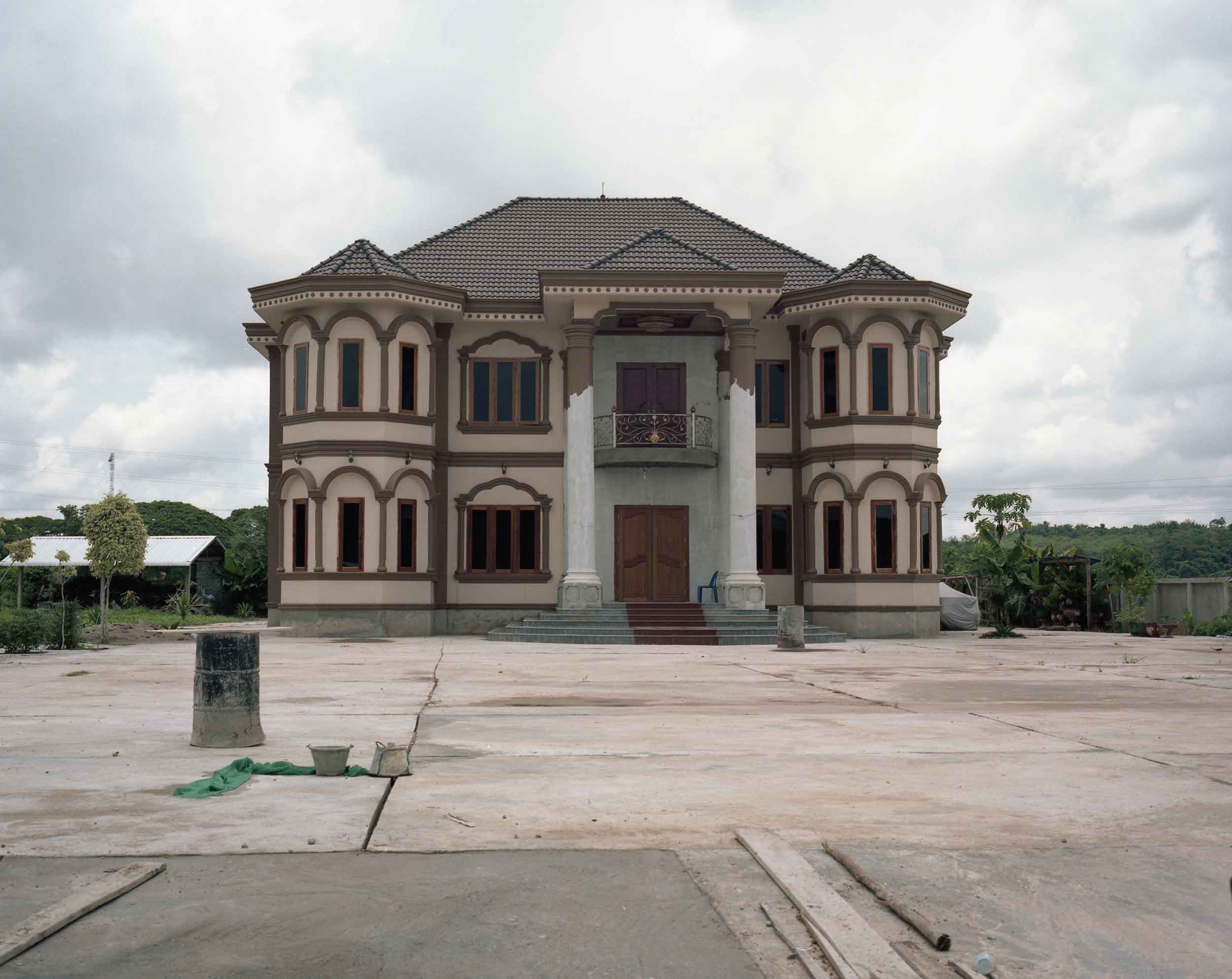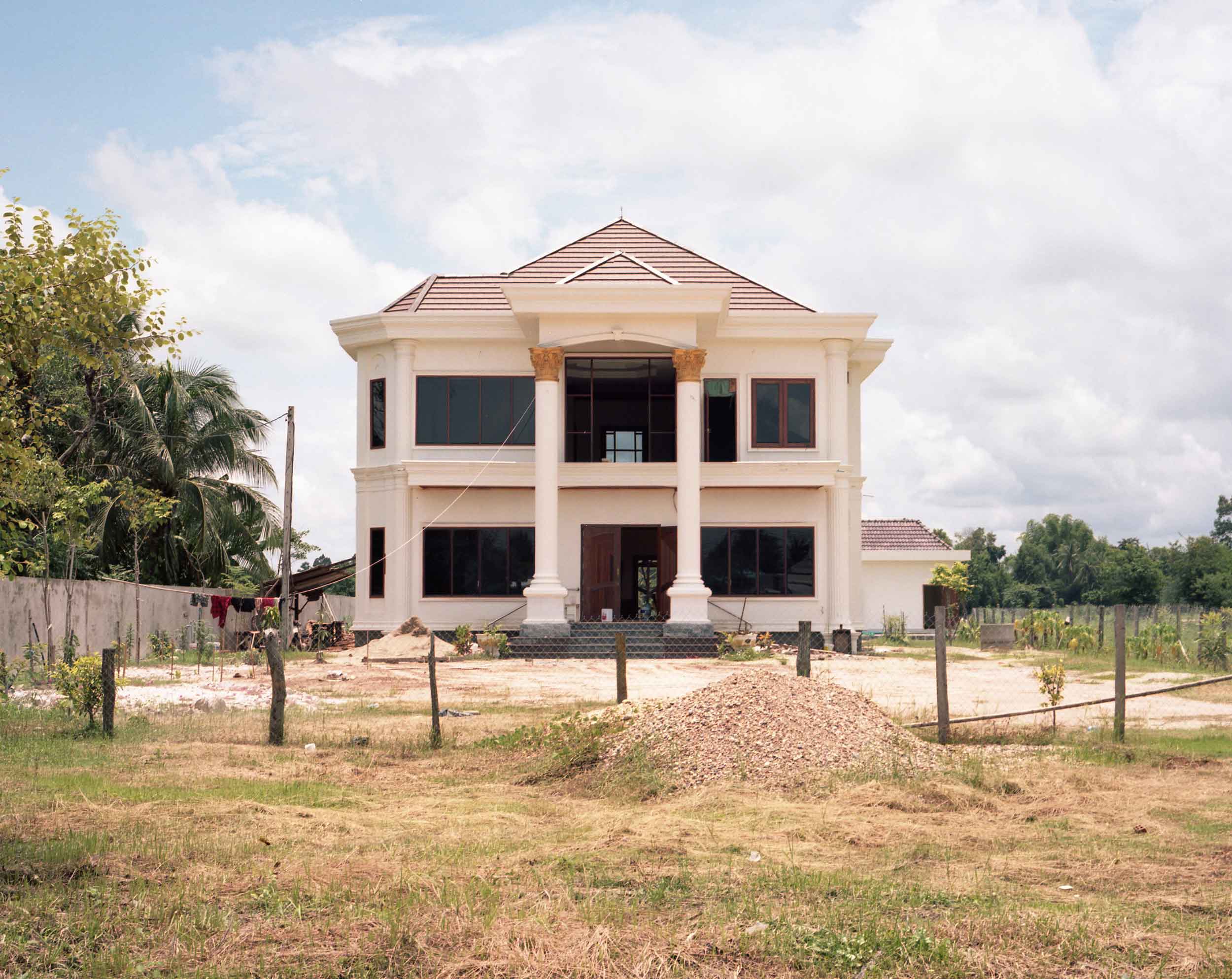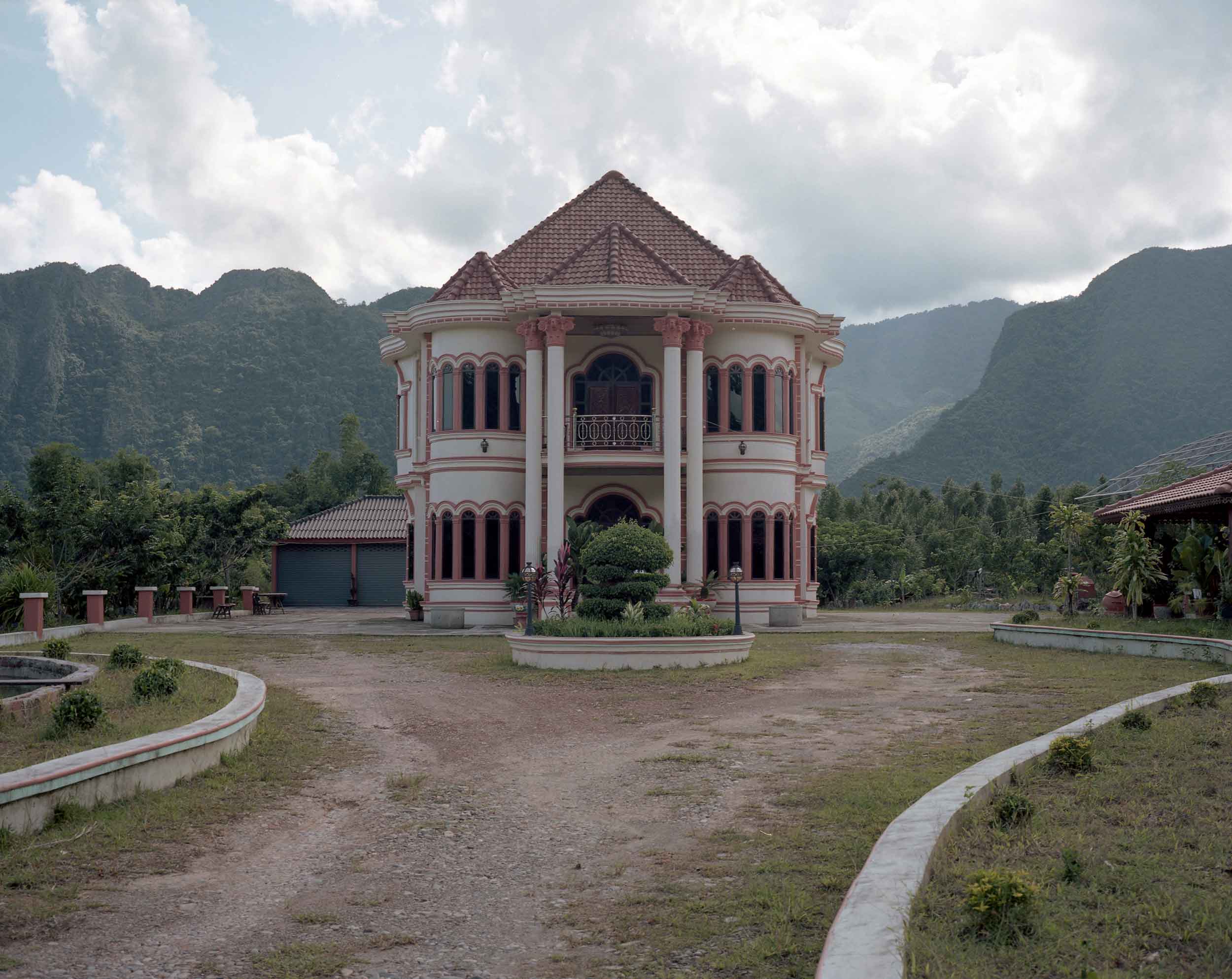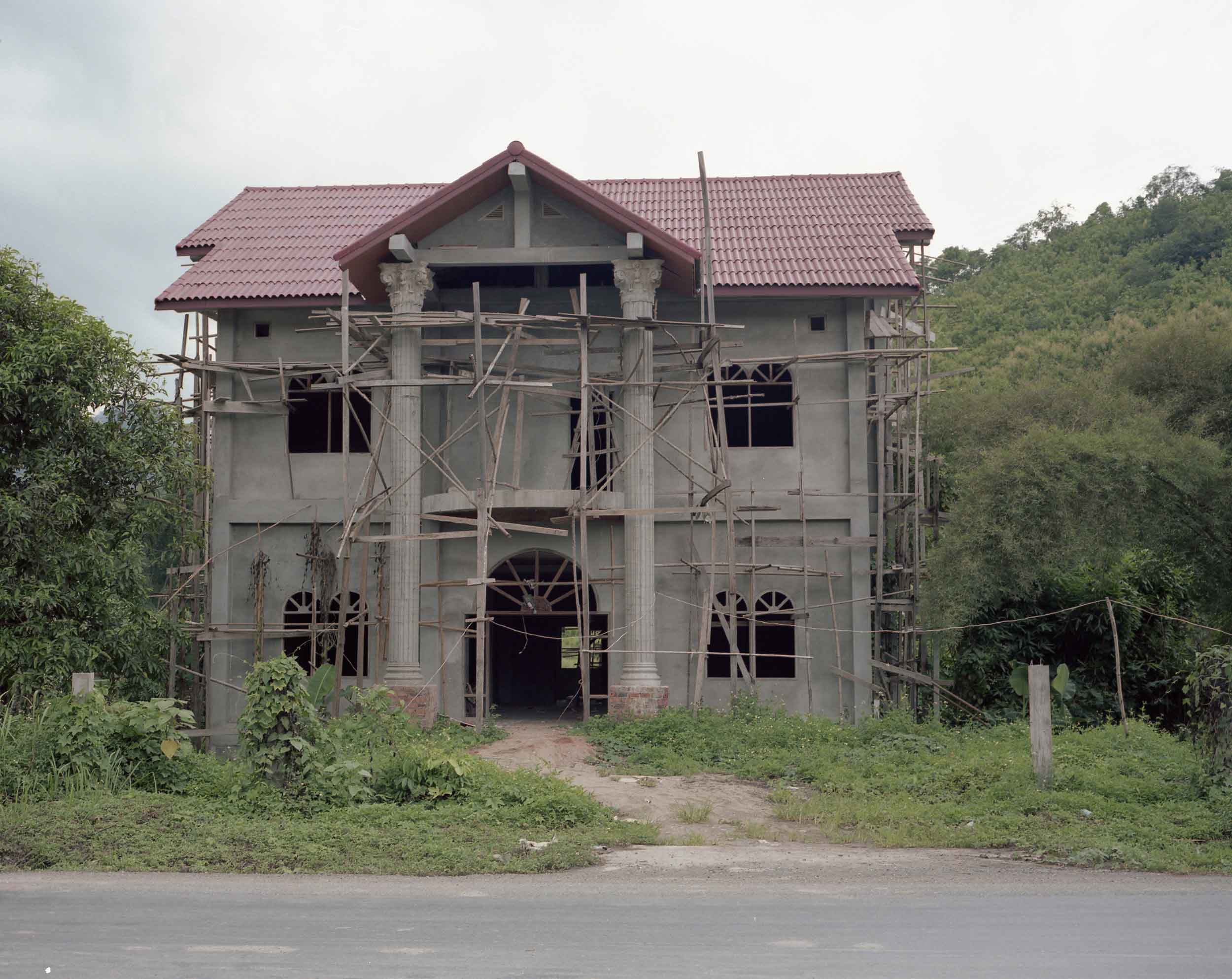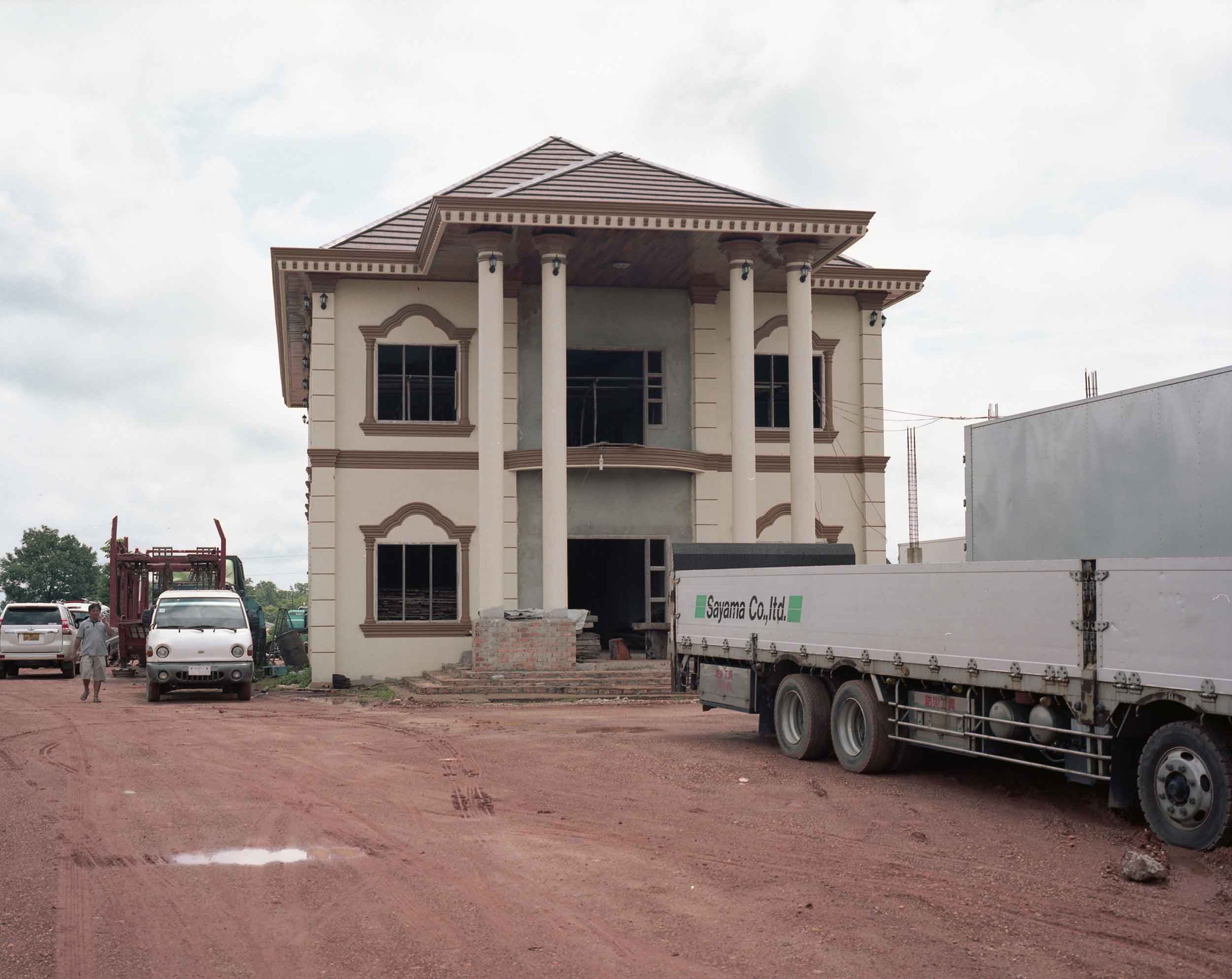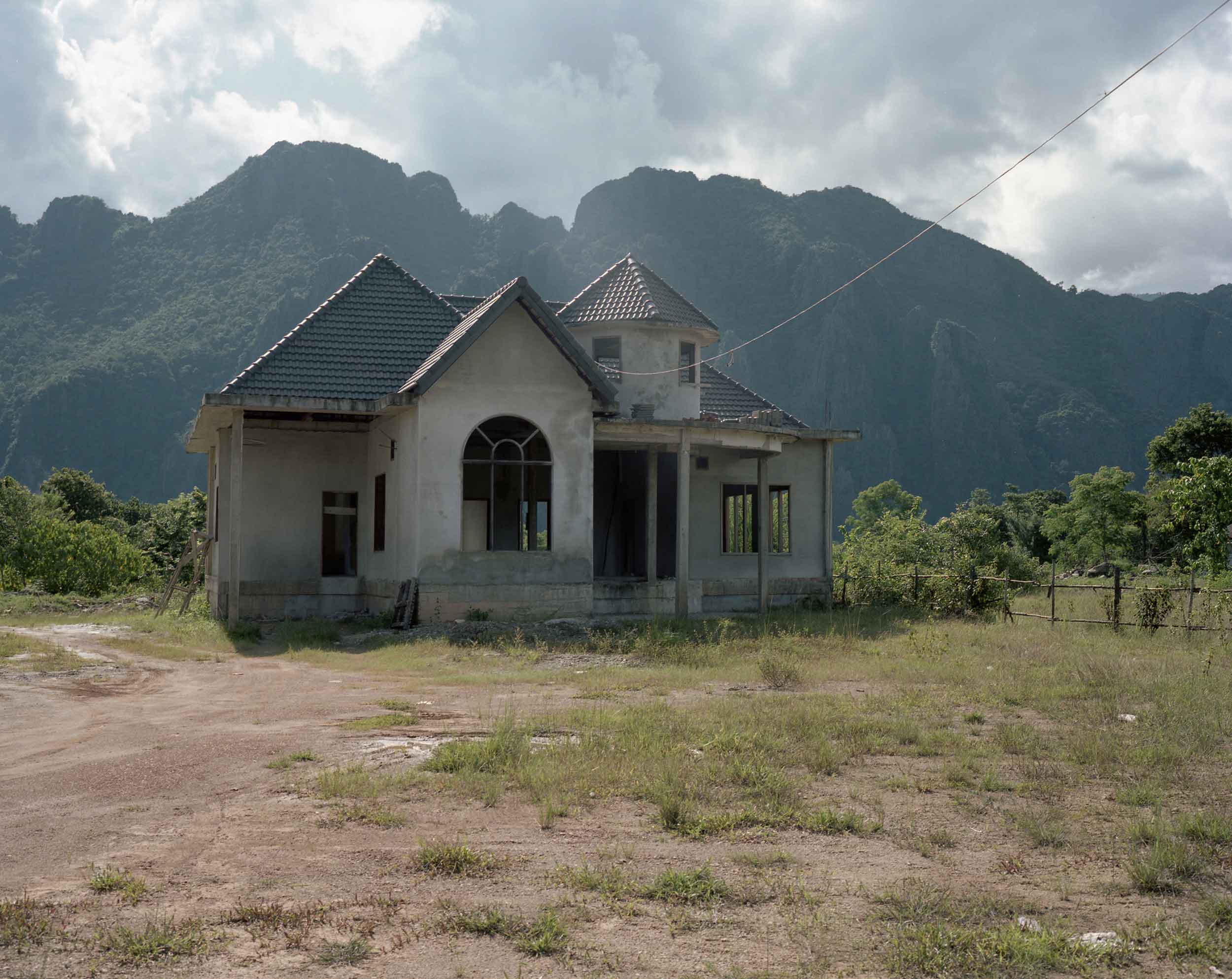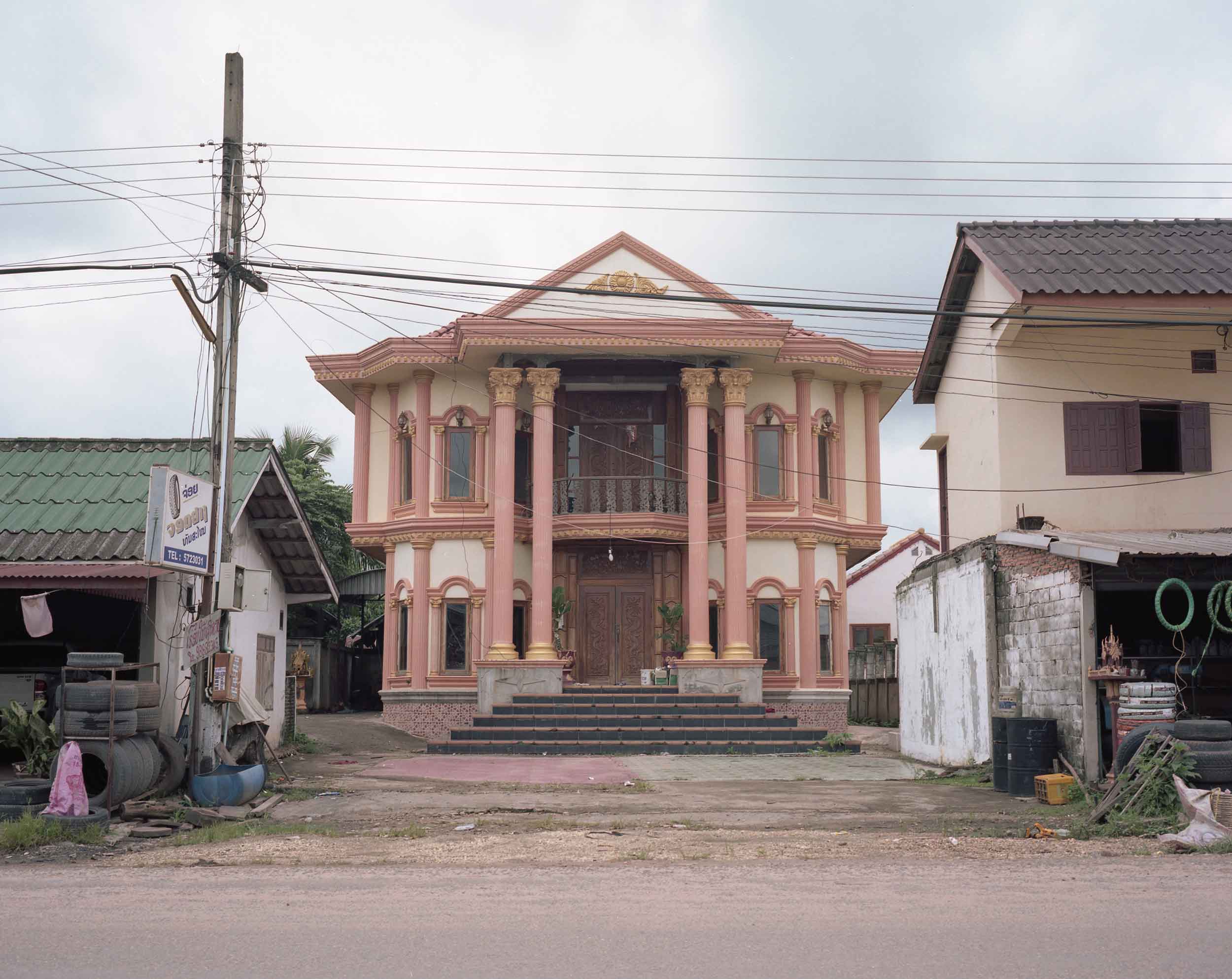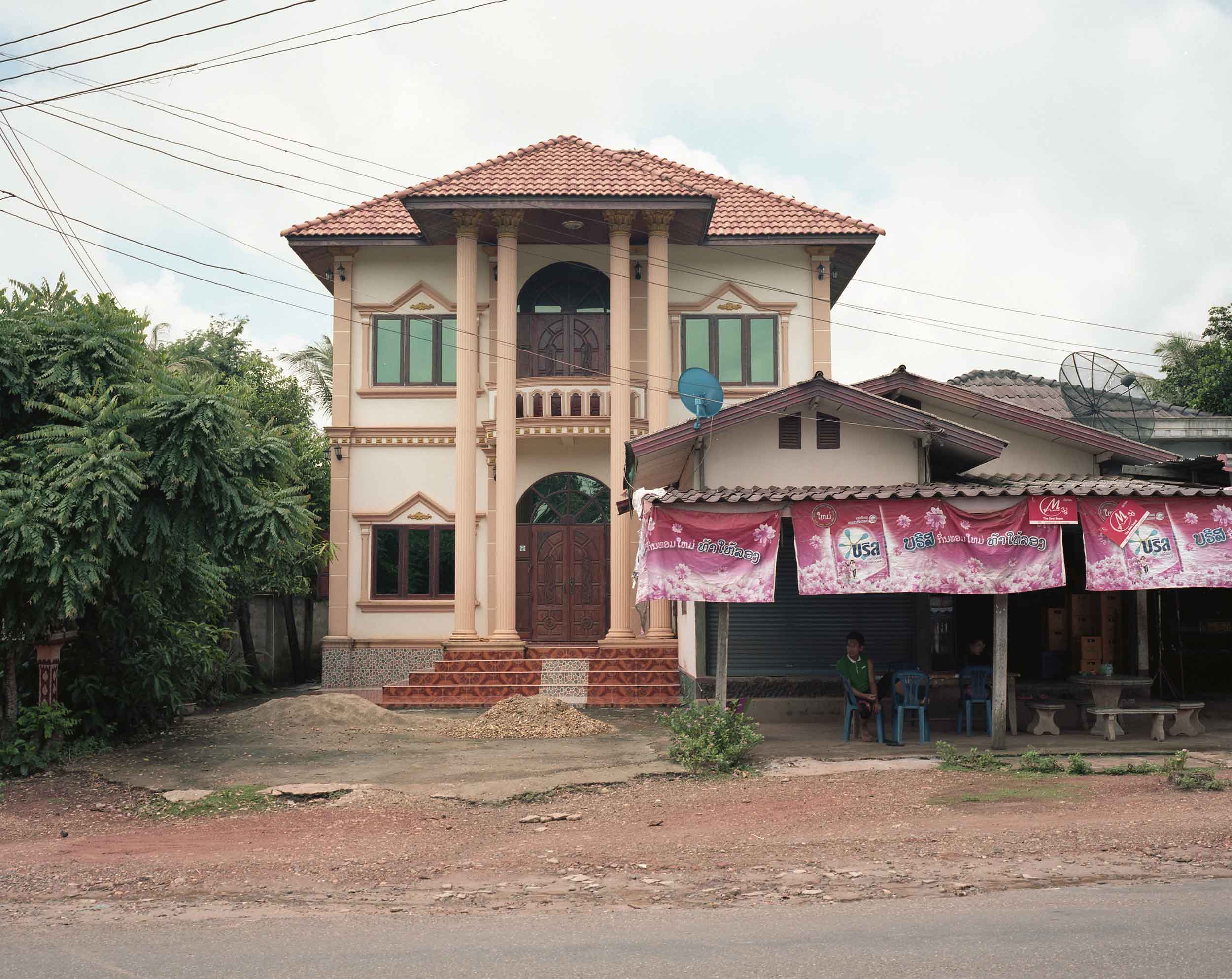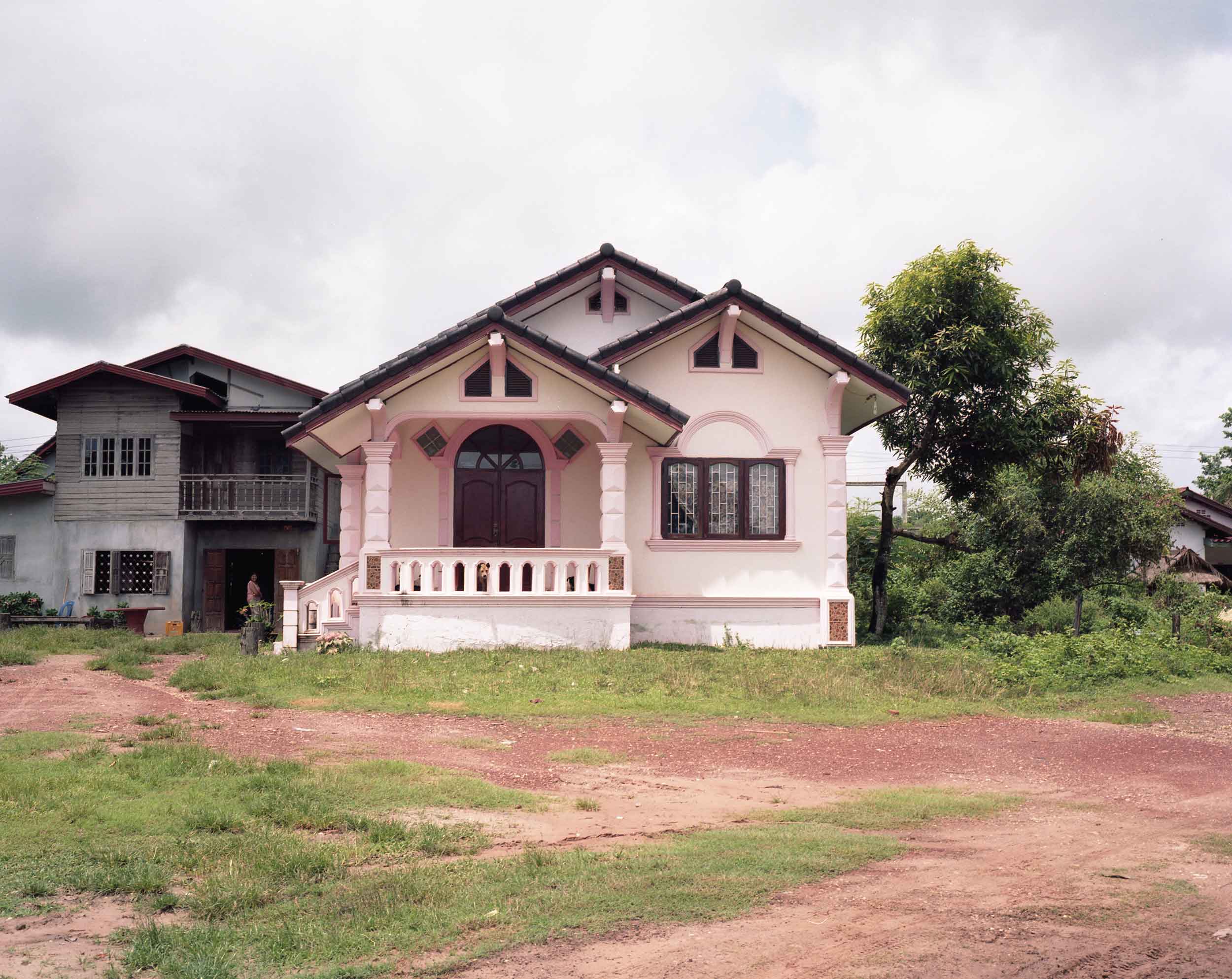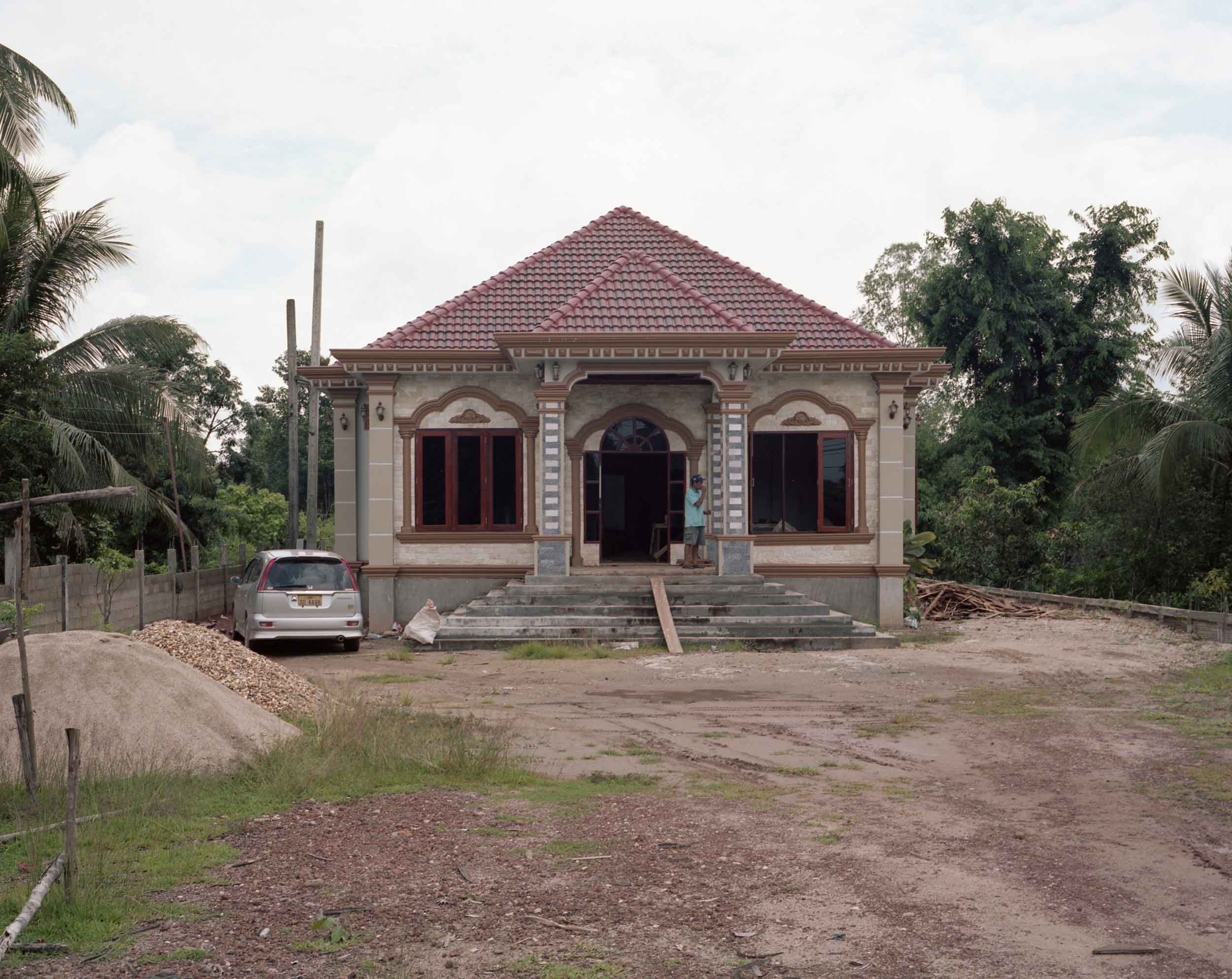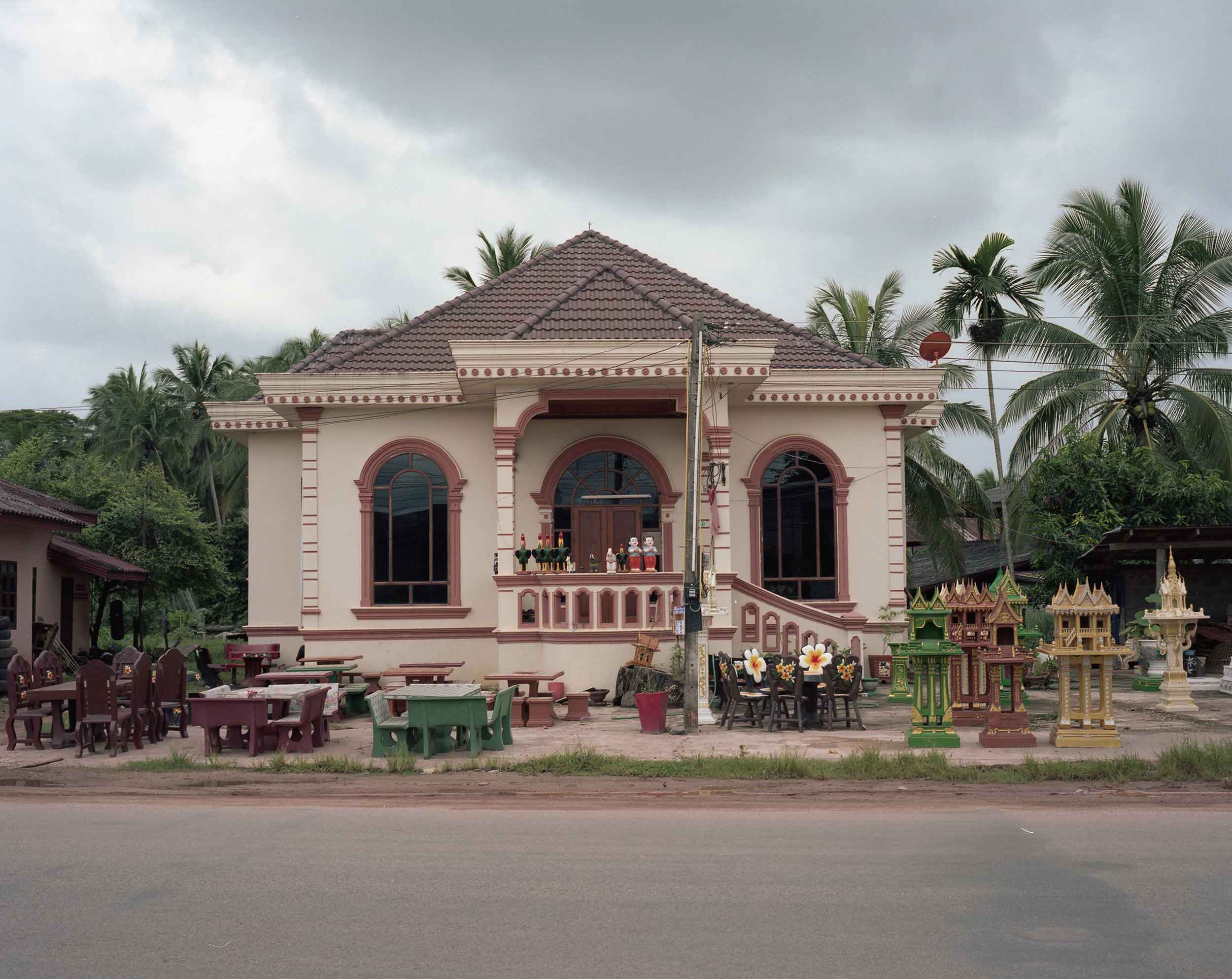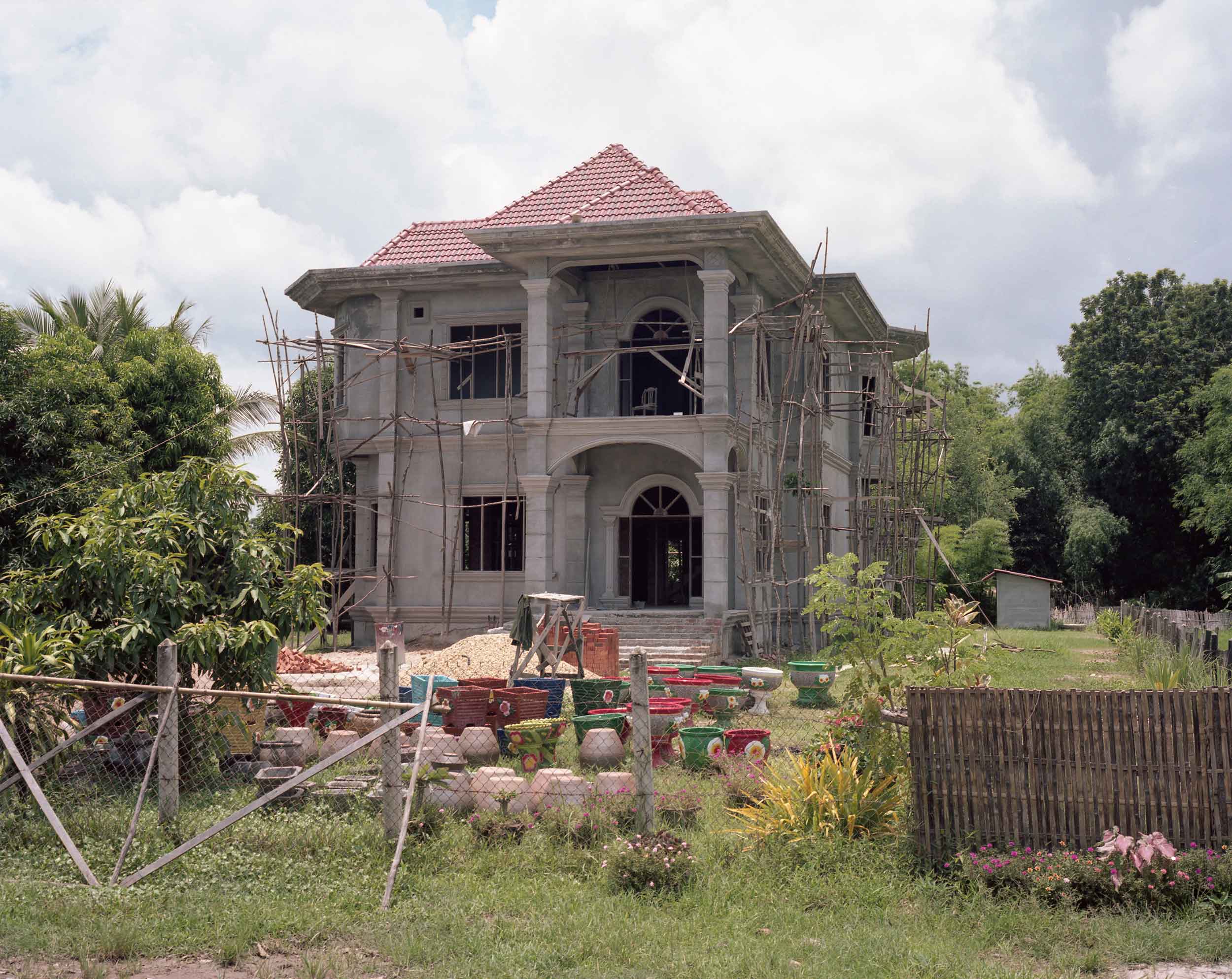New Laotian Vernacular
Despite being one of the poorest countries in Southeast Asia, Laos is currently going through a rapid process of modernisation, highlighted by the boom of its real-estate market and the current improvement of the country’s obsolete infrastructures.
Route 4, connecting the two most important cities of the nation—Ventiane and Luang Prabang—can be taken as an urban laboratory to study the changes Laos is currently undergoing. This strategic artery crosses a low-density rural landscape punctuated by small villages whose economy is still mainly based on agriculture. Nevertheless, even in this remote area, the radical transformation of the vernacular residential typology becomes a valuable tool to decode the specific cultural, economic and social change of the whole country.
The typical Laotian wooden pile houses, in fact, have recently seen the juxtaposition of a new exuberant residential typology that expresses the recent emergence of a new upper middle class whose success mainly depends on the growth of tourism and the construction industry. Newly finished or still in construction, these single family villas with their new and uniform eclectic typology are changing the urban landscape of the country. At the same time, these often pompous dwellings, characterised by a mixture of sacred, colonial, and even Hollywood-inspired architectural references, highlight the influence globalisation is having even in the most remote areas of the globe: a high porch with columns—embellished with elaborated Corinthian capitals—represents the most distinctive element of this new residential typology. Similar to the pediment of a classic temple, the façade stands as a monumental memento of the recently acquired wealth and status of the owners.
The juxtaposition between the rural landscape and these new and often colourful buildings generates an uncanny feeling in the foreign observer. The bamboo scaffolding, fragilely erected to sustain the villas still in construction, becomes the main paradigm of this urban perceptive glitch.
This new eclectic typology reflects the strong dichotomy between past and present, rural and urban, tradition and desire of new cultural models of a society that is slowly adapting to the influence of new cultural references.
